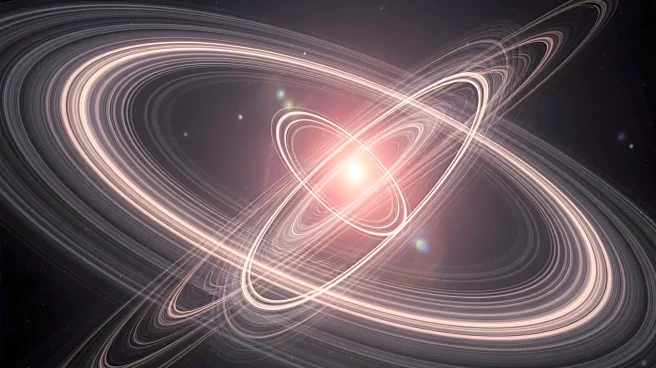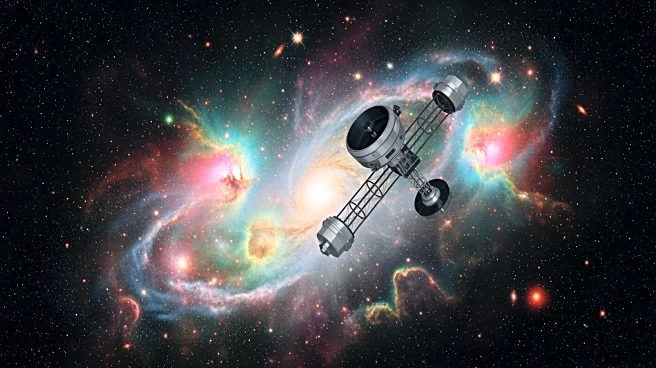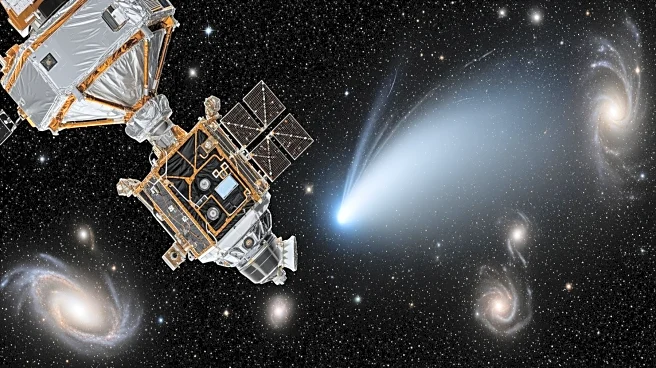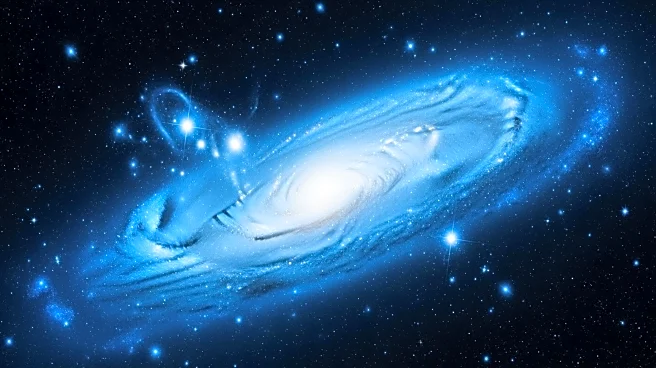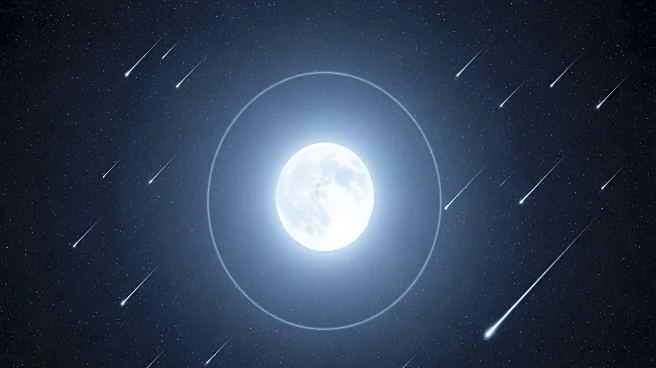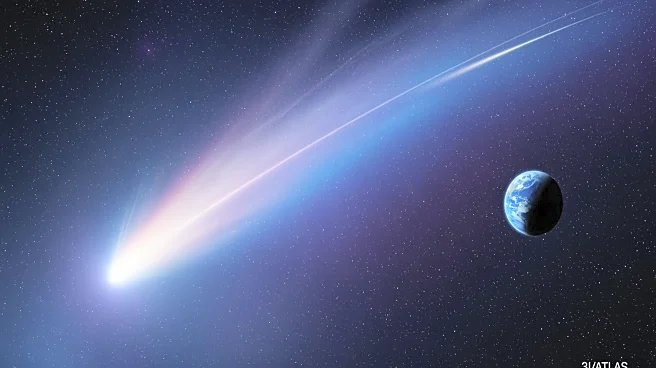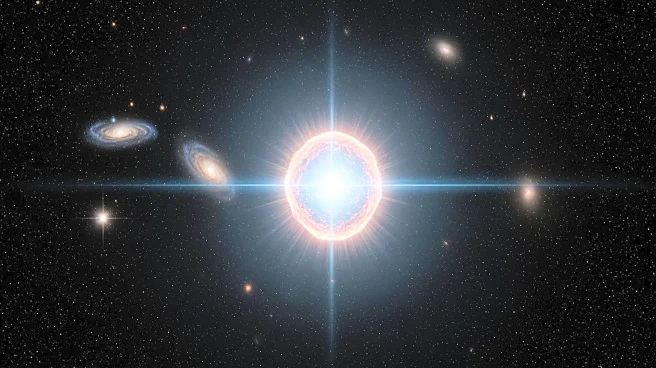What's Happening?
A new study has proposed a unified model to explain the contrasting jet stream directions on the solar system's giant planets. The research, led by Keren Duer-Milner, suggests that the depth of a planet's
atmosphere determines whether its equatorial jet streams will blow eastward or westward. This model applies to gas giants like Jupiter and Saturn, which have eastward jet streams, and ice giants like Uranus and Neptune, which have westward jet streams. The study uses hydrodynamic models to show that deep atmospheres produce eastward winds, while shallow atmospheres generate westward winds. This discovery provides a cohesive understanding of jovian atmospheric dynamics and could guide future observational searches for supporting evidence.
Why It's Important?
This development is significant as it offers a comprehensive explanation for a long-standing mystery in planetary science. Understanding the atmospheric dynamics of giant planets not only enhances knowledge of our solar system but also aids in the study of exoplanets. The model's implications extend beyond our cosmic neighborhood, providing a tool to understand the diversity of planetary atmospheres and climates across the universe. This could impact future space missions and the search for life on other planets by offering insights into atmospheric conditions that support habitability.
What's Next?
The next steps involve seeking observational proof to support the model. The team plans to use data from NASA's Juno spacecraft, currently orbiting Jupiter, to search for evidence of the tilted convection columns predicted by the model. This would provide strong confirmation of the model's accuracy. Additionally, the model's implications for exoplanetary studies could lead to new research directions in understanding atmospheric processes on distant worlds.
